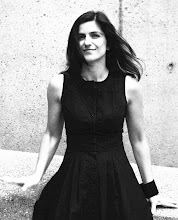The Lives of Images
 |
| The Lives of Images, Peter Galison in conversation with Trevor Paglen. Image source: Aperture |
"What provokes us to pursue something, to want to find out more? “Curiosity is an oddly ambivalent word,” notes critic Brian Dillon in this issue. It can lead, he points out, to a range of conditions, from utter distraction to deep concentration, all stemming from the “urge to discover.” Photography has long served as a medium of choice not only for the curious practitioner, but also for his or her audience, whose curiosity may be either aroused or appeased by an image..."
This extract is part of the editorial statement of the June issue of Aperture 211 on Curiosity. The editors mention about Peter Galison's conversation with Trevor Paglen:
"...While some artists have more or less intentionally confounded viewers, researchers in other realms of image making have used photographs to show us the world as it is, in an attempt to come to a deeper understanding of the phenomena that surround us. Science historian Peter Galison and artist Trevor Paglen discuss the history of objectivity, as well as how images—now digital, searchable, everywhere—may be shifting from being mere depictions to performing specific functions..."
This conversation on images, representation, and subjectivity, links very much to my doctoral research, and my work with Picanico while at Harvard GSD. Trevor Paglen frames the conversation by emphasizing vision's dominance in the knowledge world, at least in the Western thought. Peter Galison distinguishes levels of seeing, that range from systematic, to natural-philosophical, scientific and so on and he brings the issue of who is the seeing subject. These ideas about relationships among seeing images, representation, and knowledge are being discussed deeper in his Objectivity book. While explaining the argument of his book, Galison refers to the series of atlases of many things, "atlases of almost any category you can think of," as he points out. These atlases have been for a period the legacy of knowledge. In my dissertation I also discussed atlases or classifications within the architectural realm. In my chapter 2, I argued about the non-objectivity of those taxonomies no matter if they were portraying themselves as objective ones.
By using historical examples about photography and their relationship to the machine, Galison discusses how we moved away from the ideal, mechanical or expert-altered image towards the manipulation (through) images. Images are no longer re-presentation of the world but intervention into the world. He claims:
"Today, more and more. we want images that do things. An evidentiary image is no longer sufficient for many scientists. We want images that help us organize information, that are accessible, that may bot be a copy of something 'out there' at all...Images become tools, like video-monitor image used by a distant doctor to conduct tele-surgery. When images are there to cut, fold, connect, manufacture, their purpose us to help us do things beyond the classical task of categorizing and confirming."
In response to Paglen's question, Galison reflects on the kind of images he intends to use for their film on nuclear waste. In his team, there is not a clear direction whether the images should be abstract, artistic as effective communicate devices of the message. In his effort to re-link with the present day Paglen declares:
It seems that we 're moving away from thinking about images in terms of representation and toward thinking about their creation as part of a networked process, guided by political or economic 'scripts' embedded in the algorithms controlling these image-making networks. If we look at Facebook's facial recognition and search technologies, or at Instagram, we see similar things going on, but in commercial context."
Galison also brings to the discussion the idea of power and how their work (both his and Paglen's) relate to image-surveillance:
"...all this is the new frontier of privacy, surveillance, and control. The image is an integral part of of this new matrix of power, and I think that we don't really understand where it is going or what it will become. The searchable, cheap image, the archives of our digital lives- these will, I am sure, transform our way of life and our concepts of power."
To understand limits or distinctions between science and art, or between photographer and artist, the two discussants use examples like that of Leonardo da Vinci, Charles Baudelaire, and more contemporary Ansel Adams. Their last take has to do with the ubiquitousness of Photoshop and the death (if ever been alive) of the ideal (mimetic) photo.
Labels: art, technology, theory



0 Comments:
Post a Comment
<< Home